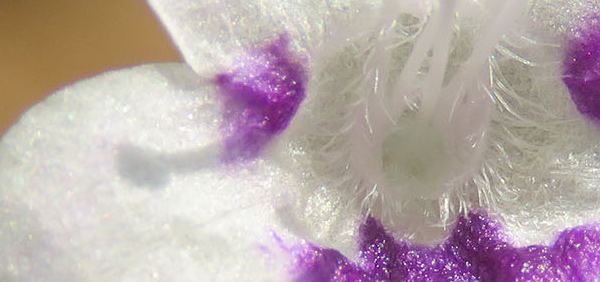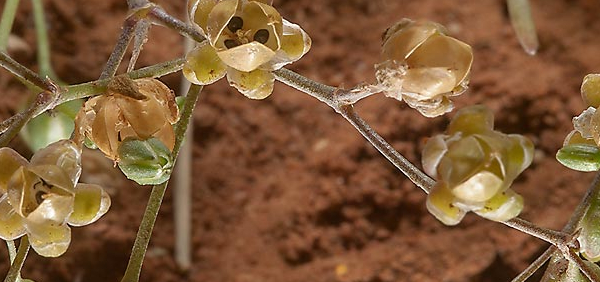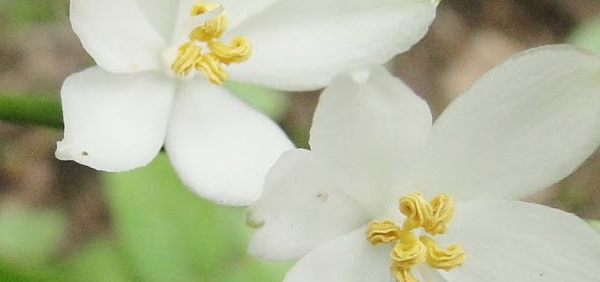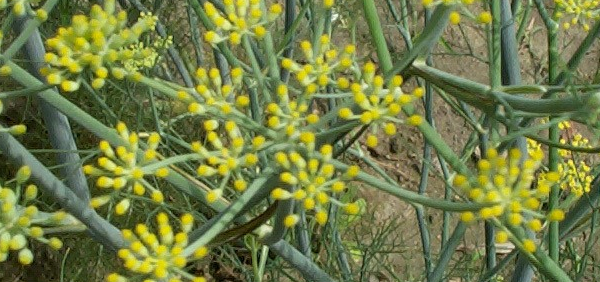Sarja:
 Vateria indica Linn. is a evergreen medicinal tree that grows up to 30m height indigenous to evergreen forests of western ghats from North Karnataka to Kerala. The resin exuded by the tree is known as Piney resin, white Dammar or Dhupa1. Resin is obtained by tapping the tree by making semicircular incisions on the stem through the cork cambium up to the surface of the sapwood. The resin starts oozing from the incisions in 3-4 days and continues till 60-90 days. The resin commercially finds its use in the timber industry in manufacture of varnishes. The use of plants and their exudates in therapy has been among the oldest and widely studied topics. There are ample proofs of the applications of plant exudates in the treatment of various diseases in classical text books of Ayurveda and Siddha.
Vateria indica Linn. is a evergreen medicinal tree that grows up to 30m height indigenous to evergreen forests of western ghats from North Karnataka to Kerala. The resin exuded by the tree is known as Piney resin, white Dammar or Dhupa1. Resin is obtained by tapping the tree by making semicircular incisions on the stem through the cork cambium up to the surface of the sapwood. The resin starts oozing from the incisions in 3-4 days and continues till 60-90 days. The resin commercially finds its use in the timber industry in manufacture of varnishes. The use of plants and their exudates in therapy has been among the oldest and widely studied topics. There are ample proofs of the applications of plant exudates in the treatment of various diseases in classical text books of Ayurveda and Siddha.The resin is known as Sarja rasa (SR) in Ayurveda and Vellai Kungiliyam (VK) in Siddha. It is obtained by incising and tapping the tree V. indica Linn. The resin finds its use in traditional Indian systems of medicine like Ayurveda and Siddha for health and healing diseases4. It is credited with tonic, carminative and expectorant properties and is used for the treatment of respiratory disorders like chronic bronchitis, throat troubles, tubercular gland, boils, piles, diarrhea and rheumatism and so on. Recent studies on the medicinal tree have also shown anti-cancerous properties.
Some authors like Bhava Prakasha have considered Resin of Shala – Sal tree (Shorea robusta) as Sarja.
But commonly,
Sarja is the gum extracted from Vateria indica
Rala is the gum extracted from Shorea robusta.
Taxonomical Classification
Family: DipterocarpaceaeVERNACULAR NAMES
English: white dammer tree, Indian copal treeHindi: Kahruba, Dammar
Mentions / Gana
Amradi Varga (Dhanvantari Nighantu)Aushadhi Varga (Kaiyadeva Nighantu)
Priyangvadi Gana (Sushruta Samhitha)
Definition
Trade name: Vellapine, White Dhup, White Damar, Piney resionSynonyms
Synonyms in Ayurveda: Ajakarna, Bastakarna, Lata Vruksha, Sarjaka, Sala, Maricapatraka, Kashaya, Chirapatraka, Kalakuta, Rajodbhava, Vallivruksha, Gandhavruksha, shal, ral, sarjarasa, kanakalodbhav, shalsar, rava, maharup, dhupan, sarja, dhunak, sarvarasaRasa: Kashaya Tikta
Guna: Snigdha
Veerya: Sheetha
Karma: Vatahara
Cultivation:
Nursery Technique
Raising Propagules:
Seeds are collected from fully ripened fruits. The normal practice is to collect the fallen fruits. Seeds are sown in raised nursery bed of 10m x 1.0m. Seeds germinate in about 30-45 days after sowing. The nursery bed is prepared by mixing sand, soil and Farm Yard Manure in 1:1:1 ratio.
Transplanting the Seedlings to Poly Bags:
Seedlings of 45 days old are transplanted into poly bags having 10 kg of soil mixture containing sand, soil and FYM. Seedlings are maintained for about six months for proper root establishment in the poly bags.
Transplanting the Seedlings to Main Field and Optimum Spacing:
Trees are huge and can survive in the field about 80-100 years. The well established seedlings are planted in the field in rainy season. Spacing of 15m x 15m from plant to plant and row to row is recommended and accommodating 45 trees per hectare only.
Propogation:
Propagation material is seed.Harvesting:
Trees are cultivated for resinous gum. It is collected by incision in the bark. The plants are expected to yield gum after 15 years of planting. Yield of gum ranges from 0.5 kg in the initial harvesting to about 2.5 kg/tree at 40-50 years of age. Sustainable harvesting is obtained by removing 1/3rd of the bark of the plant to exude resin.
The tree becomes ready to yield resin after 20 years of age.
Phytochemistry:
Bark contains Dl-epicatechin, fischinidol and afzetechin. Tree yields a resin which is a complex mixture of triterpenes. Seeds yield semi solid fat known as Piney tallow or Malabar tallow. Fruit shell yields tannins. Gum yields lipids.
Oleoresin contains essen. Oil,(+) amphena, a-b- Pinene, Limonene, Chamazulene etc.
(Reference: Illustrated Dravyaguna VIjnana, Vol. II, by Dr JLN Shastry)
Parts used for medicinal purpose
Bark, Gum, ,Morphology:
Plant is a large magnificent evergreen resinous tree, reaching up to 25 meter tall. Trunk is about 3 m in girth. Bark is smooth, about 1 cm thick, whitish grey blotched with green, bitter and acrid in taste, peeling off into round flakes. Blaze is dull brown. Wood is white and hard. Young branchlets are drooping, with minute stellate trichomes. Leaves are alternate, elliptic, oblong, 10-25cm X 5-10cm in size, heartshaped or rounded, apex acuminate, margin entire, leathery. Lateral veins are 12-14 pairs, stout and parallel. Stipules are prominent.
Floral Characteristics
Flowers are bisexual, about 2 cm across, white, slightly fragrant, arranged in panicles. Panicle is robust, multi-branched, up to 15 cm long and drooping. Fruit is capsules, 4-6 cm X 2-4 cm in size, pale-brown, fleshy, hard when dry, splitting by 3 valves when ripe
Geographical distribution:
It is also endemic to Western Ghats in Maharashtra, Karnataka, Kerala and Tamil NaduECOLOGICAL ASPECT:
It is a large resinous tree. Normally used as an avenue tree. It is found in moist deciduous to evergreen forests, especially along watercourse. It is found at an altitude up to 1200 m msl.General Use:
Resin known as Dammar resin is considered tonic, carminative, expectorant and used in chronic bronchitis and throat troubles, piles, diarrhoea, rheumatism, tubercular glands and boils. It enters into an ointment used for carbuncles and is a good emollient for plasters and ointment bases. Bark is alexipharmic.
Mada – intoxication
Krumi – worm infestation
Vardhma – enlargement of the scrotum
Vidradhi – Abscess
Badhirya – deafness
Yoniruja – Vaginal pain
Karnaruja – ear ache
Atisara – diarrhoea, dysentery
Research:
Preliminary physicochemical evaluation
Antitumor effect of stilbenoids from Vateria indica
Precautions:
Seek medical advice for its use during pregnancy and lactation.
It can be used in children in small doses.
Ayurvedic Formulations:
Common Ayurvedic Formulations of Sarja with their IndicationsSarja Taila - Oil prepared with the gum resin indicated in boils, blisters, keloids, worm infestation
Lavangadi Churna - used in treatment of diarrhoea, bloating, abdominal pain etc.
Chinchadi Kuzhambu - used in neurological conditions. For almost all types of Vata Disorders (external). Only for the body.
Sarvamayanthaka Ghritam - used in Ayurvedic treatment of gout, Parkinson’s disease, neck stiffness, locked jaw, paralysis, thigh cramps etc
- » Classification and names of Sarja
- » Synonyms and definitions of Sarja
- » Drug Properties of Sarja
- » Chemical Constituents of Sarja
- » Standardization of Sarja
- » Parts used and Dosage of Sarja
- » Morphology and Histology of Sarja
- » Distribution and Conservation of Sarja
- » Cultivation of Sarja
- » Sarja in the market
- » Medicinal Uses of Sarja
- » Researches and clinical trails of Sarja
- » Sarjain other sytems of medicine
- » Ayurvedic formulations with Sarja
- » Images of Sarja













